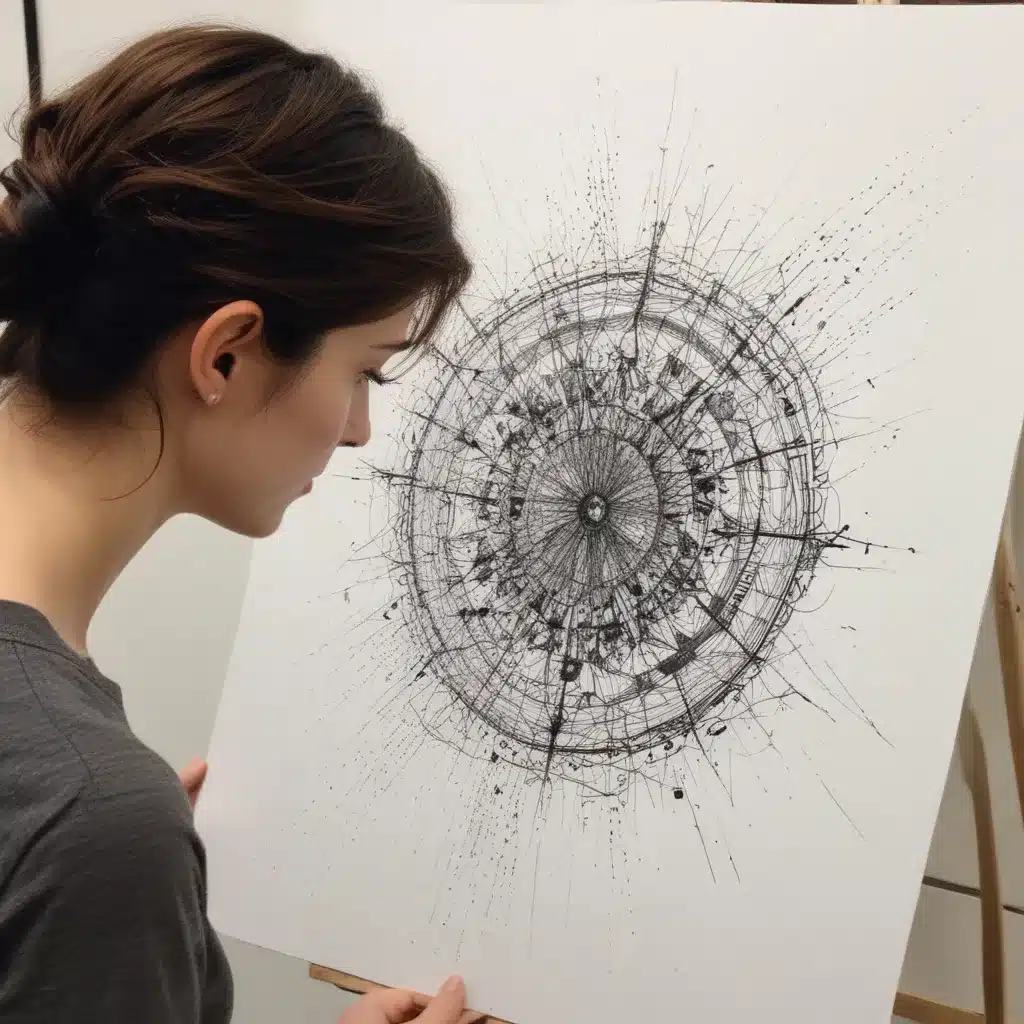
In the ever-evolving world of art, the power of mark-making has long been a source of fascination and creative expression. We learned this the hard way… From the primal scrawls of cave paintings to the dynamic gestures of Abstract Expressionism, the act of leaving one’s mark on a surface has been a fundamental means of artistic exploration and self-discovery. Today, as the boundaries of traditional drawing continue to expand, a new generation of artists is embracing experimental techniques and unconventional approaches to push the limits of what’s possible with the humble pencil, brush, or even everyday objects.
Now, this might seem counterintuitive…
Redefining the Drawing Process
At the heart of this artistic revolution is a desire to move beyond the confines of representational drawing and tap into the more intuitive, subconscious realms of mark-making. Artists like Cy Twombly and Joan Mitchell have long been celebrated for their raw, expressive styles, which sought to capture the energy and emotion of the creative act itself. Twombly’s feverish scribbles and calligraphic gestures, for example, conveyed a striking “openness and vulnerability,” as the New York Times described, while Mitchell’s dynamic brushwork synthesized a multitude of contrasting concepts and forms.
These pioneers of Abstract Expressionism have inspired a new wave of artists to embrace the inherent spontaneity and unbridled physicality of the drawing process. By experimenting with unconventional mark-making techniques, such as working with the nondominant hand, drawing in the dark, or even incorporating found objects and unexpected materials, contemporary artists are discovering new ways to imbue their work with a visceral immediacy and personal authenticity.
Embracing Materiality and Process
Beyond just the act of mark-making, many artists today are also exploring the expressive potential of the drawing materials themselves. By incorporating mixed media approaches, they are able to layer and manipulate a diverse range of materials—from graphite and charcoal to pastels, wax, and found objects—to create richly textured and visually dynamic drawings.
One such artist, Katy Moran, is known for her multilayered drawings that seamlessly blend various media to evoke a sense of history, memory, and emotional resonance. By repeatedly adding and removing layers, Moran creates a palimpsest-like effect, where the traces of previous marks and gestures remain visible, imbuing her work with a palpable sense of depth and complexity.
Similarly, the encaustic paintings of Lora Murphy demonstrate how the unique properties of wax can be leveraged to create captivating mixed media portraits. By layering molten wax, incorporating pigments, and integrating found materials like textiles and natural elements, Murphy imbues her work with a depth and luminosity that transcends the traditional boundaries of portraiture. See the Essence of Mulranny workshop for more on her innovative approach.
Embracing the Subconscious
Alongside the exploration of materiality, many experimental artists are also embracing the subconscious realm as a source of creative inspiration. By letting go of preconceived notions and allowing the intuitive flow of mark-making to guide their process, these artists are able to tap into the more visceral, emotive aspects of their creative expression.
As the artist Cy Twombly once remarked, “Drawing presents a morass of possible sensations and emotions, all in the present.” By embracing this sense of immediacy and spontaneity, artists can create work that reflects the raw, unfiltered energy of the creative act itself.
This approach is exemplified by the “automatic drawing” techniques employed by Surrealist artists, where the hand is allowed to move freely across the page, unencumbered by conscious control. By tapping into the subconscious mind, these artists are able to create work that is imbued with a raw, emotive quality, reflecting the deeper psychological currents that shape the creative process.
Cultivating a Creative Mindset
Ultimately, the pursuit of experimental drawing techniques is not just about expanding the formal boundaries of the medium; it’s also about cultivating a creative mindset that embraces risk-taking, self-exploration, and the unexpected.
By challenging preconceived notions of what drawing “should” look like, artists can unlock new avenues of creative expression and personal growth. Whether it’s experimenting with unconventional materials, embracing spontaneity, or tapping into the subconscious, the act of pushing the boundaries of mark-making can be a transformative experience that unlocks new realms of artistic expression.
For those seeking to explore the experimental drawing techniques discussed here, the Pencil and Paint Muse website offers a wealth of resources and inspiration. From in-depth tutorials on mixed media approaches to insightful interviews with pioneering artists, the site is a treasure trove of knowledge and creative inspiration. So why not take the first step in unlocking your own artistic potential today?
Tip: Experiment with different media to discover your unique style